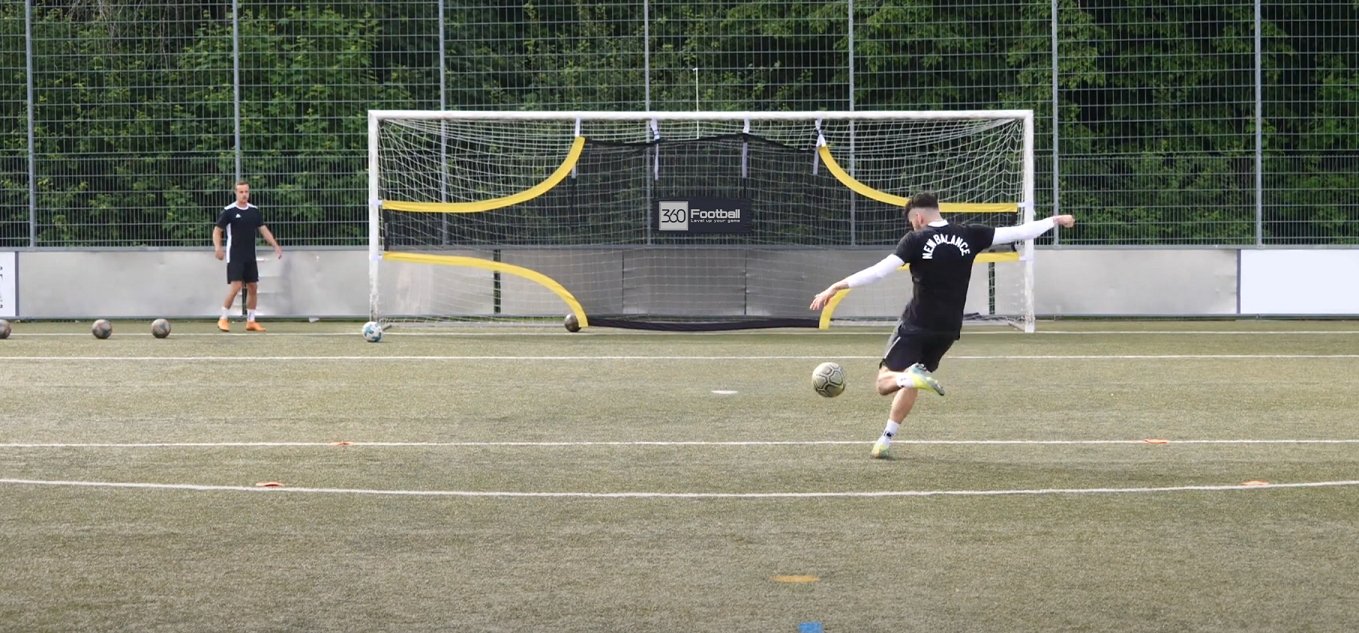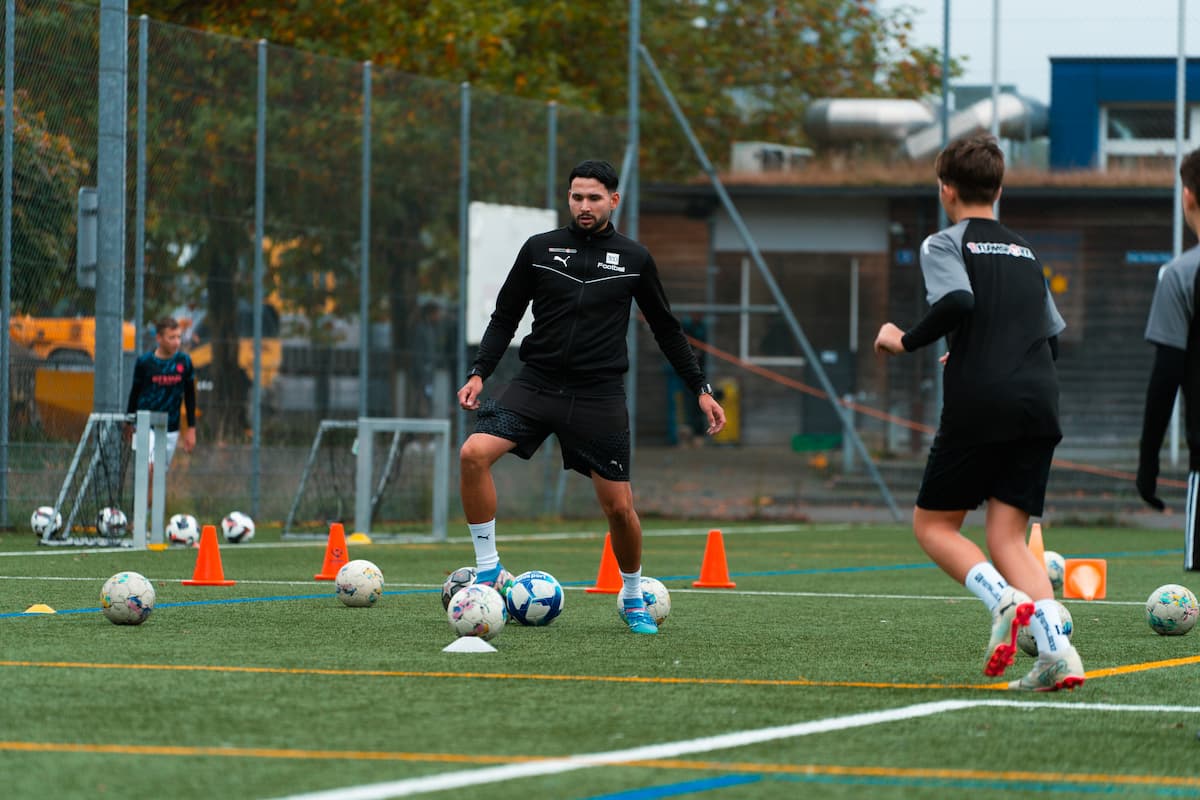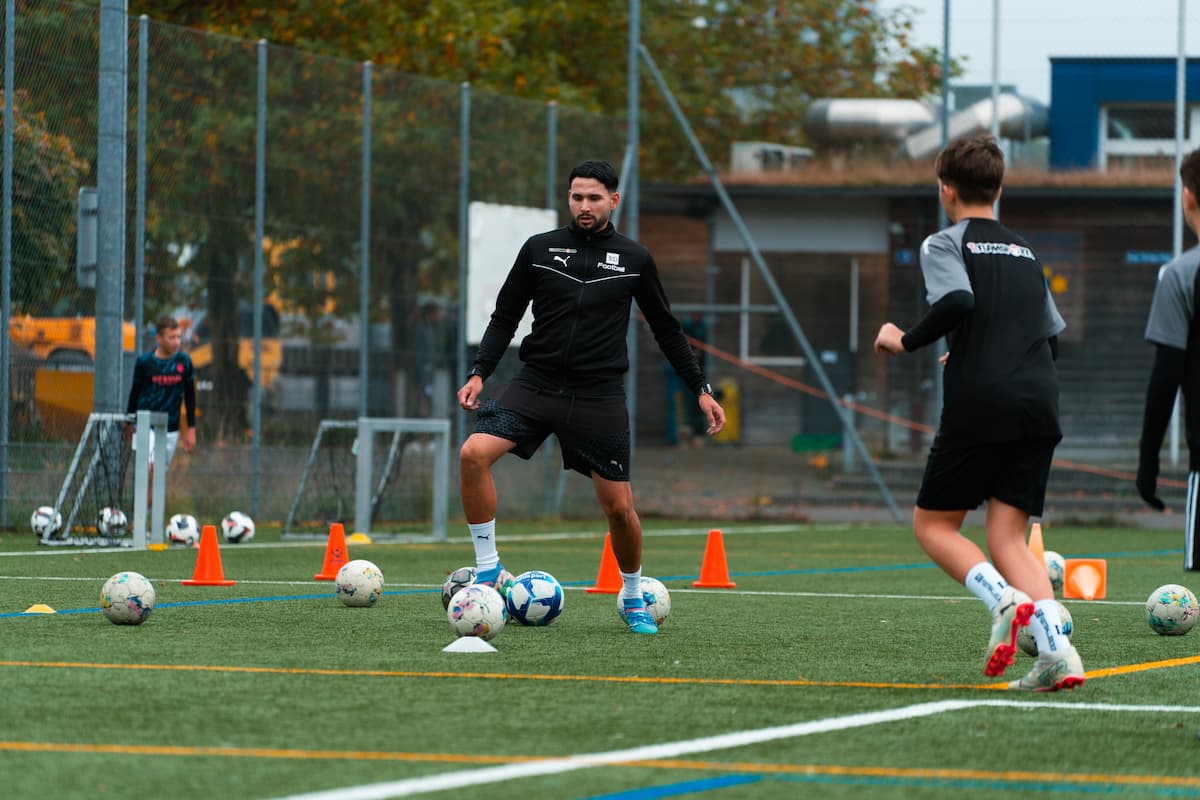If a layman were asked in football what the job of a striker is, the answer would be quite simple – “score goals!” There is of course a lot of truth in this statement. As an attacker, you are always measured first by the goals you score.
However, strikers now have a lot more responsibility than making sure the ball ends up in the net at the end of an attack. As a striker, other options have come to the fore in recent years to help your own team. But that doesn't mean that scoring goals as a striker is no longer as important. Scoring goals is still an essential task of an attacker.
Striker types
The way an attacker can support his team in addition to scoring goals depends very much on his skills and physical requirements. A small, agile striker will perform different actions than a large, powerful attacker in order to advance his team. The first striker will also move in completely different spaces in order to best showcase his qualities.
So that you know how to best use your skills on the pitch, it makes sense to divide the strikers into different types. This distinction shows you which actions and in which rooms you can lead your team to victory.
1. The counter-attacker
If you are a fast, strong attacker, you will particularly benefit from high opposing chains and switching moments. You can use your speed to its best advantage when you are played at the back of the defense. That's why you should move a lot on the opponent's last line and wait for deep passes. Your pace will help you to get to the ball in front of the opposing defenders after interface passes or flying balls behind the chain. In addition, you can create even better starting conditions for a deep ball if you are already in motion when you pass it. This gives you a speed advantage over the defenders at the time of the pass. This will help you get to the ball before defenders who are probably also quick and have good positioning skills. Ideally, you prepare for this speed advantage by running parallel to the opponent's chain. As soon as the pass takes place, you start with an explosive attack into the depths behind the central defender. Sergio Agüero, Jamie Vardy and Kylian Mbappé are typical examples of counter-attackers.

This video will help you become extremely fast as a striker:
The center forward
If you are tall and physically very robust, it will be difficult to separate you from the ball. If you, as a center forward, place your body between the ball and the opponent, the defender hardly has a chance of getting to the ball. Your physical requirements will also help you with crosses. By rushing into the penalty area and jumping off powerfully, you can hardly be stopped when you cross. You can use your physical superiority not only when crossing, but also as a wall player. As soon as there is a hint of a pass to you, you establish physical contact with your opponent. This will prevent the opponent behind you from intercepting the pass. If you are then played, you process the ball in a sideways position and with the foot that is far from the opponent. This helps you keep the ball as the distance between the ball and the opponent is kept as large as possible. In addition, the lateral position helps you to keep an eye on your opponent and therefore be able to react to his actions as quickly as possible. In this position you can hold the ball in depth, tie up opponents and then pass the ball to a teammate who is moving up. Typical professional center forwards in this category are Harry Kane, Luis Suarez or Romelu Lukaku .

This video will help you hold the ball robustly:
The “false” nine
If you as a striker have good first contact, always have the ball under control and are very tricky, you will be difficult to separate from the ball even in tight spaces. As a “false” nine, this helps you create a connection between attack and midfield. To do this, you repeatedly leave the opponent's last line and instead offer yourself in the gaps. You act between the opponent's midfield and defensive line and move into the passing window between 2 of the opponent's midfielders. This creates big problems for the opposing defenders. Your opponent is constantly faced with the question of whether he should stay in the chain or follow you. If he holds his position, you can turn it up after a pass. However, if your opponent decides to call, there will be a gap in the defensive line. If you are played in this narrow space between the chains, you can use your excellent ball handling to tie up opponents and then use your teammates. Erling Haaland, Karim Benzema and Robert Lewandowski are excellent examples of this.

This video will help you dribble through tight spaces and never lose control of the ball:
Become a goalscorer
After introducing these types of strikers, it should be clear to you how you can best incorporate your skills into your team's game. You may even have the prerequisites for several of the positions presented - for example, if you are quick and have a strong dribbling ability, you can help your team as a counter-attacker or as a "false" nine. This makes your attacking game more flexible and makes it harder for you to predict.
But regardless of your skills, as mentioned at the beginning, as a striker you will always be judged very much by your hits. But the path to scoring a goal can also look very different - for example, the center forward will be very good at converting crosses and the "false" nine will also be accurate when dribbling under high opposition pressure.
But there is one particular finishing situation that all strikers, regardless of their playing style and abilities, should take a closer look at - the shot on goal with the first or second contact from close range. In this way, by far the most hits are scored at the top level. A good long-range shot is of course also a weapon, but as a striker you will score the majority of your goals directly and inside the penalty area.
As an attacker, you could of course have the thought that you don't need to pay attention to these shots because you actually always take advantage of these chances. However, as a striker it is also worth practicing shots from close range - especially direct shots inside the penalty area. At the end of the season, this can decide whether you have scored 20 or only 10 goals and whether you come first or only fifth.
When training to shoot on goal from short distances, you should keep the following in mind:
- You don't need enormous impact force to hit the goal from a few meters. It is enough to place the ball and push it flat into the corner. Because of the proximity to the goal, the goalkeeper will never get to the ball if you shoot with some precision. You can shoot particularly precisely with the inside, which is why you should opt for an inside kick when shooting directly on goal from a few meters .
- In training, in an exercise without opponent pressure, hitting the goal from 8-12 meters is no problem. You have time to prepare the ball and look for the goalkeeper. In the game the situation looks significantly different. If you can finish from close range, you shouldn't hesitate and put the ball down again. Otherwise the opportunity is usually wasted. This means that you have to finish even if the ball is on your “weak” foot. For this reason, you should practice finishing with both feet . No coach in the world expects brilliant long-range goals from your weak foot. But you should definitely be able to get the ball over the line from a few meters with your left hand.
- During the game, the ball will rarely lie still in front of you and wait for you to shoot on goal - unless you are at the penalty spot. In all other situations the ball will be moving, possibly even very sharply. This makes it much more difficult to hit the ball precisely. Therefore, practice direct shots from a few meters under very different starting conditions - after a flat back pass from the baseline, after sharp crosses, after the ball has been thrown halfway up, etc.
With the help of this video you will become more accurate as a striker - regardless of whether you shoot from close range or outside the penalty area:
Plan B
There are phases in a player's life when the ball simply doesn't want to cross the line. This is annoying as a midfielder and defender, but not quite as tragic as it is as a striker. Because if there is one thing we take away from this blog post, it is that the attacker is measured by his goals.
Of course, this can be very frustrating or even unsettling, as you may at times only see the death of opportunity in yourself.
However, no one forces you to base your performance as a striker solely on your goals. That's why it can help you as a striker to focus your attention on other facets of the game if you haven't scored in a while. Focus entirely on the skills that you are particularly good at and have nothing to do with scoring goals - for example, winning balls, solving 1-on-1 situations or making deep passes. Draw motivation from the game's smaller successes.
This will help you regain your self-confidence as a striker and sooner or later you will hit the goal again - without having to worry too much about it.
In this video you will get more helpful tips to gain self-confidence for the next game:
About the author:
Luis Österlein (Twitter: LOsterlein ) is a game analyst for the U23 team at FC Bayern Munich and a freelance author. In close collaboration with 360Football, he writes specific blog posts that support players in their football development support.


